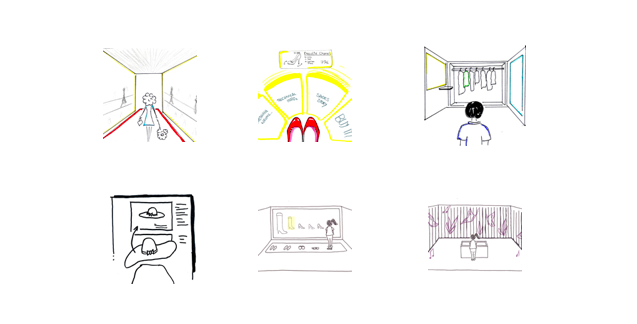The workshop began with an afternoon of presentations from H-umus representatives Fabio Carraro and Tamara Romeo about the aims of the ACRIB project and the research so far.
The students then started their creative investigation by brainstorming in groups to generate as many ideas as possible for the sale of not only footwear but fashion in general; ideas were quickly noted in words or sketches on Post-Its for future reference.
They selected some of these ideas for more detailed development. Many were playful or fantasy scenarios: the shop as catwalk or magic forest, for example, or a virtual wardrobe which displayed clothes and, in its mirror, showed the customer dressed in them.
Analysis of these ideas then suggested that the next stage should be a framework of categories by which future proposals should could be generated and evaluated.
The students first identified the type of experience different people would look for while shopping. A busy mother might look for speed and convenience, for instance, whereas a teenager would be looking for fun. They then devised a framework which distinguished, in particular, between different kinds of purchaser (child, teenager, young family, wealthy fashion fan, etc.); of retail context (shopping mall, luxury boutique, cruise liner etc.); of intended mood (fun, serious, sporty etc.); of information which an interactive installation might usefully offer customers, shop owners and manufacturers; and of the technologies which might be used to sense, process and display this information.
The workshop’s first week ended with a presentation, to H-umus representatives and IUAV teachers, of the most promising concepts, using storyboards to set the scene and illustrate the interactive sequence. After discussion, the concept ‘Cinderella’ was chosen to be prototyped during the second (final) week.
